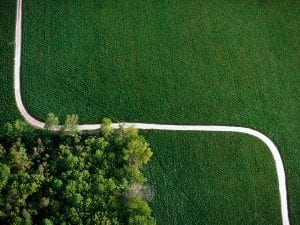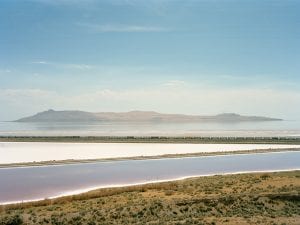Reconsidering humanity’s place within a complex, media-saturated and accelerating world through the presence of contemporary image-making.
It didn’t make headlines. For most of us, it passed unrecognised – just another day on Planet Earth. But a decade ago, in 2008, the human race underwent a profound cultural shift. For the first time in our history, a majority of us lived not in a small pocket of the world’s endless natural expanses, but all on top of each other – in cities. The scales swung the other way, and we became “an urban animal.” Scientists have widely named this phenomenon the Anthropocene – the age of man. And it is, as the title of William A Ewing and Holly Roussell’s Civilization attests: “The way we live now.”
Published by Thames & Hudson, the book combines images from a wide range of contemporary series with a series of essays, exploring how, as co-editor Ewing writes: “Today we are mostly in awe of ourselves.” He touches upon a profound shift, not only in the ways in which we inhabit the planet, but a change in what we understand to be photography. The invention of the camera in the mid-19th century gave birth to a mass media tool, a way of reflecting and seeing our surroundings that, whilst fighting for recognition, also fundamentally altered the form and role of modern art. But in the 21st century, this came under threat, Thomas Struth acknowledges, with the irruption / disruption of the digital era. “Photography as we’ve known it is fast disappearing, overpowered by technological inventions,” he writes.
Civilization considers such a thought, investigating how the still image has this knack for addressing the state of the world. Artists are at work everywhere, looking at everything. Although they’re participants in a new and still emerging medium, they are perhaps the documentarians best placed to capture what has become known as the “global village” – the experience of a newly urbanised species which is now also able to communicate with each other instantly, and without the inconveniences of distances of geography, or the imposition of linguistic and cultural boundaries. We may be more aware of our divisions and opinions than ever before, but we are in fact far closer together, more bound by mutual interest, than at any point in our shared history.
Ewing is the former Director of the Musée de l’Elysée in Lausanne and has since established himself as a leading publisher of photobooks that look at the fast-moving intersection between photography and anthropology. “Something astonishing is happening, at rapid pace,” he says. “A planetary civilisation is emerging. Think of the recent World Cup; half the population watched some part of it – 3.2 billion of us. Think of the Olympics, which reaches down into every village on the Earth’s surface. Billions of people watch these events, and globally we spend trillions on them.
“Think also of air travel. You or I can decide today to fly to Ulan Bator tonight, and be there tomorrow. Armed with a slim piece of plastic, with codes inscribed on it, which anyone can verify, we can drive to the airport, choose from a number of routes and airlines, and have ourselves picked up. Hours later, we could be placed down on the other side of the planet – fed, watered, entertained – and safer than if we’d stayed on the ground. We keep two million people in the air at all times, which is an airborne metropolis that is bigger than San Francisco and Vancouver combined.
“Nike, Hubble, Airbus, Mercedes, CERN, antibiotics, heart transplants – all are evidence of us increasingly inhabiting the same world. Is this a smooth process? Of course not. There is much friction. But terrorists are also using smartphones, YouTube and Twitter. The fact of the matter is we both inhabit this same human-made skin of the planet.”
This idea is captured through the book’s impressively diverse collection of photography, spanning epic manufactured landscapes, like Edward Burtynsky’s now famous image of a chicken processing plant in Dehui City, China, along with sweeping vistas of the built environment, like Robert Polidori’s stately shots of the slums of Mumbai, to portraits of individuals in enclosed domestic spaces, such as in Benny Lam’s Trapped, which documents the living conditions of migrant workers in Hong Kong, or Michael Wolf’s geometric series Architecture of Density, depicting expansive urban skylines, which adorns Civilization’s cover.
But amidst these compositions – the kind you might expect to find animating Ewing’s argument – are more subtle depictions. A double page spread is given to a grid-like staging of Roger Eberhard’s recent series Standard, showing the many different hotel rooms he has visited throughout the world – all of which look strikingly similar. Or there’s Mark Power’s queues of tourists waiting in similar orderly lines whilst surrounded by some of humanity’s greatest creations, in the series L’Italia E Gli Italiani. The curation of these diverse compositions provides a visual impression of how big and diverse the planet is, and yet how uniform our experience of cultural icons can be, from one person to the next.
As Ewing says: “The collective reality of our lives is disguised by the cult of individuality. Those trillion-dollar Olympic Games end up worshipping a handful of superb athletes, but the rest of the organisation is more or less forgotten. Similarly, Hollywood, the dream machine with an international reach, leaves us dazzled by a handful of stars. But I am always reminded of the collective reality of filmmaking when the final movie credits roll and roll and roll.”
Spanning more than 350 pages and including close to 500 images – many previously unpublished – such a mammoth enterprise has been broken down into different chapters, each exploring the underpinnings of provocative titles: words like Control, Rupture, Escape, Persuasion and Hive.
Most compelling of these is maybe the chapter titled Individual Combined / AloneTogether. Intriguing because, as the chapter attests, people have an instinctive, atavistic tendency to seek each other out. Ben Maddow, from his 1977 text Faces – a historical overview of portraiture – is quoted: “We are not solitary mammals, like the fox and the tiger,” Maddow writes. “We are genetically social, like the elephant, the whale and the ape.” His point is drawn alongside Ahmad Zamroni’s bird’s-eye view of Muslims bowing together in prayer – countless backs are bent in a moment of heart-stoppingly beautiful shared synchronicity and faith.
Maddow’s point of humans as genetically social also applies to photography. As Ewing points out, no man (with a camera) is an island. “We’ve been trained to think of artists as solitary workers. But, on examination, that falls apart. They need camera and lens makers, electronics experts, drivers, pilots to transport them. They rely on labs, paper-makers, pigment and ink-makers, then agents, dealers, curators, funding institutions, editors, designers, publishers, promotors. Each is immersed in a web of interdependency. But I think of the collective in another sense,” Ewing says.
“Imagine a satellite view of the world, or any country or city. If you had good enough eyes, you’d see thousands of photographers busy beavering away. Some work for themselves, and some for others. Here’s Raimond Wouda focusing on schools, or Thomas Struth looking at museums, Dona Schwartz with family arrangements, or Edward Burtynsky on the oil industry. They are producing a portrait of our planet. Some work on landscapes, cities and machines, others on order, and the rest on conflict. There are hard-nosed realists, and those that employ fictive or metaphoric techniques.
“In Civilization, we have simply taken the widest view of this that was possible. It’s a sampling, of course. Even a show of 100,000 works would be a mere sampling. There are billions of pictures which are being made annually, perhaps even daily. Who know, or cares, beyond a certain number. But most are mere flickers, ones that don’t come close to anything resembling permanence. But amongst them are those which do tell us something which we didn’t already know.”
It’s a compelling idea. Also featured within the pages are Adam Ferguson’s portraits of soldiers returning from war in Iraq and Afghanistan. They’re simple, closely-cropped portraits of starkly-lit faces in a sea of black. They’re of people who carry with them the internal scars of the battlefield and are expressing this through their 1,000-yard stares. What does this have to do with the idea of being alone and together? And yet the inference is clear – soldiers survive such brutal wars by developing the kind of ties that transcend friendship. They entrust each other totally with their lives, in the proper functioning of a unit of interdependent people as a way of protecting an individual against an overwhelming existential threat. Another example might be Victoria Sambunaris’s open salt lakes complementing Henrik Spohler’s uniformed, plastic-looking landscapes. Both document an unprecedented type of living where artifice is the new normal. In these instances, viewers are tasked with questioning what is “real” or “natural,” and, indeed, whether the outcome of such a process of inquiry is important at all. Alex MacLean’s aerial images offer a similar view of the world – documenting the working of transportation and agriculture with an almost omniscient and, therefore, distanced view.
Then there’s George Georgiou’s slightly haphazard representation of parades, which were taken across America’s deep south. The pictures, in monochrome, have little in the way of organising principles to them at first consideration. But the title, Company of Strangers, and Georgiou’s own accompanying words, are key to understanding this work – as an outsider trying to work out the practices of a strange and alien culture in a bid to find his own place within it. The artist notes: “In a lot of places, a community doesn’t see itself – then you have that day when you can see people you haven’t seen for ages. And an outsider can see that community and lose any prejudices of that neighbourhood.”
Georgiou, in that sense, has found a way of discovering a unifying idea in photography that, at first glance, can appear crowded and chaotic. It’s an idea that appeals to Ewing: “Our book proposes ways of looking at works that support our central theme,” he says. “It’s a purposely ‘loose’ structure, and any viewer is free to say: ‘I would have put this work in that other chapter.’ But the reader will be thinking of doing so. This is what curators want. We’re in a sense holding up a mirror with this book, one in which I hope people will recognise themselves, or see a world they know.”
Tom Seymour
Civilization: The Way We Live Now is published by Thames & Hudson on 16 October. www.thamesandhudson.com










